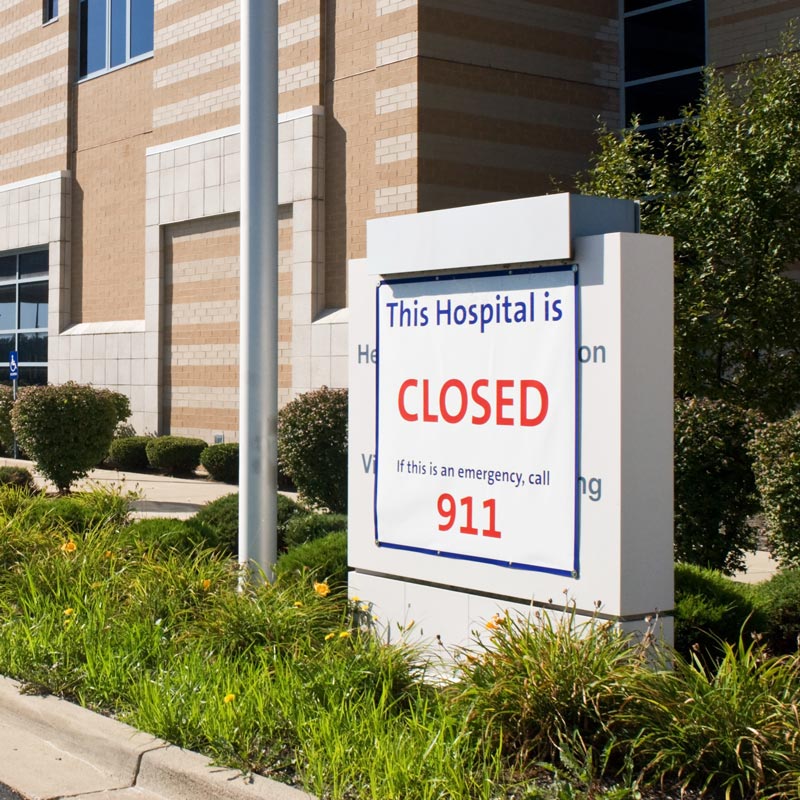
I grew up in a town of about 4,500 people in central Illinois. I never considered myself living in a rural community; a 30-minute or hour-long drive here or there was just a normal part of life. However, my home town’s population size and the fact that its first stoplight was installed when I was in primary school in the early ‘90s is probably an indicator. While growing up, access to health care was never really a thought, aside from getting shots or physicals at the local health department for school. But, as a kid, you just live day to day, without worrying about how that happens. I’m pretty sure my parents did worry about these things and were thankful to have emergency services within 15 miles of where we lived. (My younger brother and I had our share of “emergent needs” growing up, but those stories are for another day.)
I have spent almost 16 years working to improve and ensure access to care for those most in need in both rural and urban communities. I’ve learned a 15-mile drive to the nearest emergency room for many families in our state would be transcendent, especially in rural Missouri. Unfortunately, large sections of Missouri live far greater distances from emergency services and those distances are growing. Access to health care in rural communities is diminishing at a disturbing rate. These communities are experiencing hospital closures, seeing more consolidation of medical facilities, and are having increasing difficulty attracting and retaining providers. Across the U.S. over 80 rural hospitals have closed since 2010. In Missouri, four hospitals have closed since 2010, with Twin Rivers Medical Center in Kennett being the most recent. Kennett residents must now travel 50 miles or more to the nearest hospital. This facility joins a growing list of hospitals in financial distress that are turning to bankruptcy protection and/or questionable management corporations to ensure access to care in Missouri communities.
It is estimated that 31 of Missouri’s 64 rural hospitals (48 percent) are operating at a financial loss. While some recent policy extensions present a short window of opportunity to begin to address these alarming trends, the long-term outlook for care in rural Missouri is troubling. New models of rural health care and the use of promising technology solutions are needed to address what is quickly becoming a health care crisis.
Examples include free-standing emergency departments; while these facilities are not without their challenges, including state-regulatory obstacles and questions about effectiveness, they seem to provide some aspect of modernization to our current delivery system, which has proven to be unsustainable in certain communities.
Another promising approach is the use of telemedicine. Missouri has several leaders working on telemedicine with the goal of improving rural health access and keeping patients well. The tool holds enormous potential in addressing gaps in specialty services in rural communities as well as connecting patients to in-home services. To be successful, regulatory issues such as state licensure barriers, improved access to high-speed internet, and reimbursement policies not keeping pace with technological advances still need to be worked out.
Even with new models and points of access, some rural communities still must face the reality that they will not be able to keep their hospital open. Changes in the medical system, changes in payor mix, population declines, and diminishing focus on hospitals as the center of care, may mean the eventual closure of a hospital. In these unfortunate cases, how can communities begin to discuss what happens next for health care access?
The Foundation is committed to improving the health of communities most in need. As part of this commitment we are working with communities and state partners to better understand and plan for the future of rural health care delivery in Missouri. This includes testing new and innovative approaches to health care access, partnering with communities and state leaders to determine ideal operating models for existing hospitals, and learning from other states and national partners on what to do in the unfortunate event of a hospital closure. The future of care delivery in Missouri is an opportunity for innovation, sparked by clear signs that the traditional “business as usual” way is not beneficial to many Missourians who stand to lose even more access.
Now with two kids of my own, I share the worry my parents must have felt. Ironically, after using Google Maps as part of my research for this blog, I found that I now live 15 miles from the nearest hospital emergency department. However, I can say I’m optimistic that there is hope and opportunity that in the near future, care will be delivered through advanced systems that no longer make geographic location a primary factor in one’s ability to access care.
We look forward to working with our communities on this journey and welcome your thoughts and ideas on what can be done to improve rural health in Missouri.


